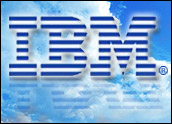
From the perspective of IT users, developer communities and global industry as a whole, IBM may be the worst place for beleaguered Sun Microsystems to land.
Sure a merger as is rumored is good — but not urgently or obviously so — for IBM. Big Blue gains modest improvement in share of some servers, mostly Unix-based. It would actually gain just enough share of high-end servers to justly draw antitrust scrutiny nearly worldwide.
Yet these types of servers are not today’s growth engines for IT vendors, they are the blunt trailing edge. Users have been dumping them in droves, with their sights set on far lower-cost alternatives and newer utility models of deployment and payment. IBM may want the next generation of data centers to be built of mainframes, but not too many others do.
Hardware Isn’t the Future
In any event, server hardware is not a meaningful differentiator in today’s IT markets. Sun, if anyone, has proven that. IBM to claim it as the rationale for the buyout is fishy. A lot of other analysts are holding their noses too.
The rumored IBM-Sun deal for US$6.4 billion is incremental improvement for IBM on several fronts: open source software (low earnings), tape storage (modest albeit dependable revenue), Java (already mostly open), engineering talent (easier to get these days given Sun layoffs), new intellectual property (targeted by design by Sun on undercutting IBM’s cash cows). In short, there are no obvious game changers or compelling synergies in IBM buying Sun other than setting the sun on Sun.
I initially thought the rumored deal, which drove up Sun’s stock by nearly 80 percent on rumor day one, didn’t make sense. But it does make sense. Unfortunately it only makes sense for IBM in a fairly ugly way. As Tom Foremski said, it smacks of a spoiler role.
The Likely Scenario
If IBM, would you spend what may end up being $4 billion in actual cost to slow or stifle the deterioration of a $100 billion data center market, and, at the same time, take the means of accelerating the move to cloud computing off the table from your competitors? As Mr. Rogers would say, “Sure, sure you would.”
Most likely, though the denials are in the works, IBM will plunder and snuff, plunder and snuff its way across the Sun portfolio — from large account to large account, developer community to developer community, employee project to project. The tidy market share and technology gems will be absorbed quietly, the rest canceled or allowed to wither on the vine.
Certain open source communities and projects that Sun has fostered will be cultivated, or not. IBM is the very best at knowing how to play the open source cards, and that does not mean playing them all.
Listen, this would be a VERY different acquisition than any IBM has done in recent memory. It’s really about taking a major competitor out when they are down. It’s bold and aggressive, and it’s ignoble. But these are hard times and many people are distracted.
It’s About Control
The deal is not good for Sun and it’s customers (unless they already decided to move from being a Sun shop to an IBM shop), and may put in jeopardy the momentum of open source use up into middleware, SOA, databases and cloud infrastructure. That’s because, even at the price of $6.4 billion (twice Sun’s market value before the deal talk), IBM will gain far more from the deal over the long term by eradicating Sun than by joining Sun’s vector.
This deal is all about control. Control of Java, of markets, developers, cost of IT — even about the very pace of change across the industry. For much of it’s history IBM has had its hand on the tiller of the IT progression. It’s was a comfortable position except for an historically exceptional past 17 years for IBM. It’s time to get back in the saddle.
Clearly, Sun has little choice in the matter, other than to jockey for the best price and perhaps some near-term concessions for its employees. It’s a freaking yard sale. Sun is being run by — gasp — investment bankers. Here’s a rare bonus bonanza in a M&A desert, for sure.
Prepare to Be Assimilated
But let’s be clear, this is no merger of partners or equals. This is assimilation. It’s Borg-like, and resistance may be futile. It is important to know when you’re being assimilated, however.
Scott McNealy, Sun’s chairman, former CEO and cofounder, famously called the 2001 proposed merger of HP and Compaq a collision between two “garbage trucks.” Well, IBM’s proposed/rumored purchase of Sun is equivalent to a garbage truck being airlifted out of sight and over the horizon by a C-17 cargo transport plane. Just open the door and drive it in. The plane was probably designed on Sun hardware, too. [Disclosure: HP is a sponsor of BriefingsDirect podcasts.]
Sun’s fate has been shaky for a long time now. The reasons are fodder for Harvard case studies.
But what of the general good of enterprise IT departments, of communities of idealistic developers, or of open and robust competition in the new age of cloud computing? In the new age, incidentally, you may no longer need an army of consultants and C-17 full of hardware and software at each and every enterprise. As Nick Carr correctly points out, this changes everything. That kind of change may not be what IBM has in mind.
Preserving the Past
It’s not easy resting having IBM in control of a vast portions of the open source future, and the legacy installed past. Linux and Apache Web servers might have made sense for IBM, but do open source cloud databases, middleware, SOA, and the next generations of on- and off-premises utility and virtualization fabric infrastructure?
IBM today is making the lion’s share of its earnings from the software and services that run yesterday’s data centers. Even the professional services around the newer cloud models (and subscription fees of actual, not low-utilization, use) does not make up for lost software license revenues. In many ways, cloud is more a threat than an opportunity to Big Blue. It ultimately means lower revenues, lower margins, less control, and feisty competitors that make money from ads and productivity, not sales and service.
Cloud models will take a long time to become common and mainstream, but any sense of inevitability must make IBM (and others) nervous. Controlling the pace of the change is essential.
The hastening shift to virtualization, application modernization, SaaS, mobile, cloud, and increased use of open source for legacy infrastructure could seriously disrupt the business models of IBM, HP, Cisco, Microsoft, Oracle and others. Moving from legacy-and-license to cloud-and-subscription (on OSS or commercial code) poses a huge risk to IBM, especially if it happens fast — something this unexpected economic crisis could accelerate.
Enterprises could soon gain the equivalent of the powerful and efficient IT engines that run a Google or Amazon, either for itself, or rented off the wire, or both. IBM probably won’t have 60 percent of the cloud services market in five years like it does the high-end Unix market (if it gets Sun). In fact, what has happened to Sun in terms of disruption may be a harbinger of could happen to IBM during the next red-shift in the market.
Didn’t Make It
Sun should have gotten to these compelling cloud values first, made a business of it before Amazon. Sun was on the way, had the vision, but ran out of time and out of gas.
Sun has let a lot of us down by letting it come to this. The private equity firms that control Sun now don’t give a crap about open source, or innovation, clouds or whether the network is the computer, or my dog’s pajamas are the computer. They need to get their money back ASAP.
As a result, they and Sun could well be handing over to IBM the very keys to being able to time the market to IBM’s strategic needs above all else. All for $6.4 billion in cash, minus the profits from chopping off Sun’s remaining limbs and keeping the ones that make a good Borg fit.
Fox and the Henhouse
There should be a better outcome. Should the deal emerge, regulators should insist on what IBM itself called for more than 10 years ago. Something as important as Java and other critical open software specifications (OpenSolaris?) should be in the control and ownership of a neutral standards body, not in the control of the global market dominant legacy vendor.
It’s sort of like letting General Motors decide when to build the next generation of fuel efficient and alternative energy cars. And we know how that worked out.
IBM has the deep pockets now to buy strategic advantage during an economic crisis that helps it in coming years. It’s during this coming period when the cloud vision begins to stick, when the madness of how enterprise IT has evolved in cost and complexity is shaken off for something much better, faster and cheaper.
And that’s what IT has always been about.
Dana Gardner is president and principal analyst at Interarbor Solutions, which tracks trends, delivers forecasts and interprets the competitive landscape of enterprise applications and software infrastructure markets for clients. He also produces BriefingsDirect sponsored podcasts.




















































Social Media
See all Social Media